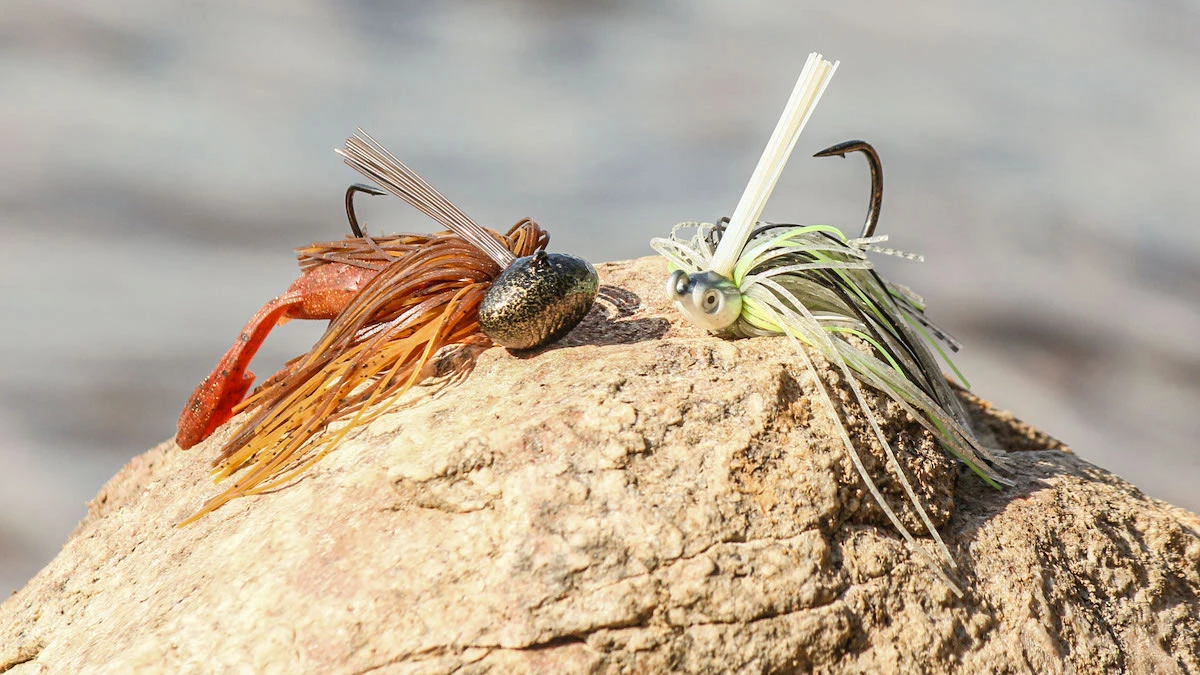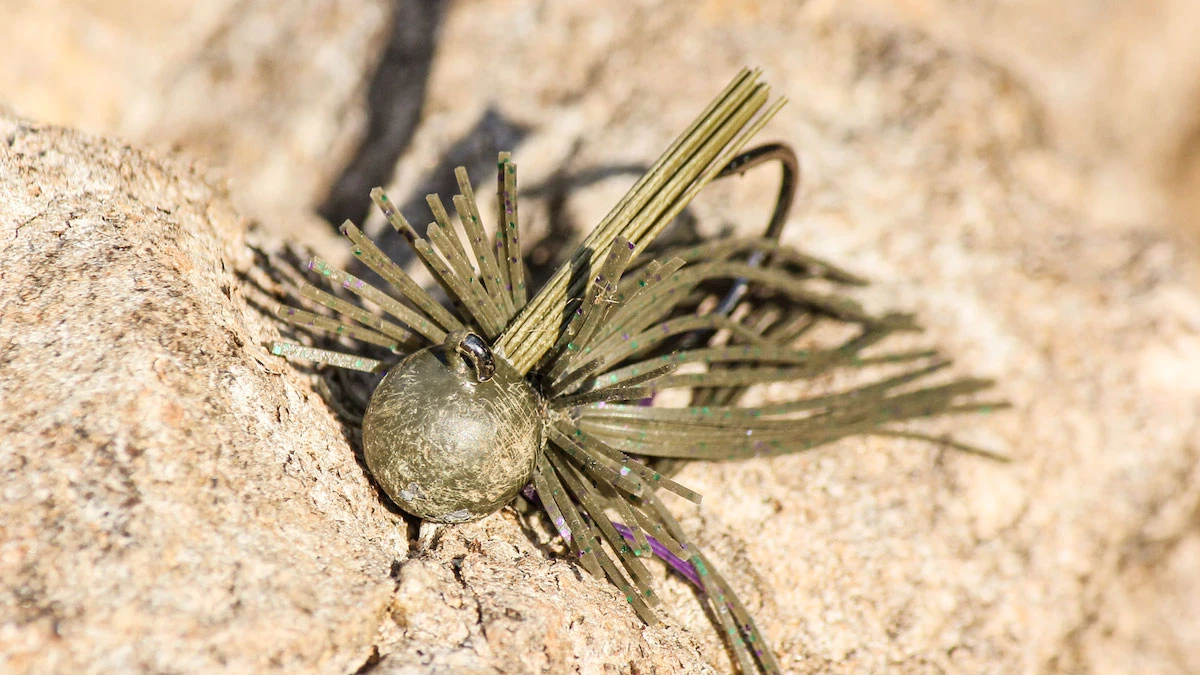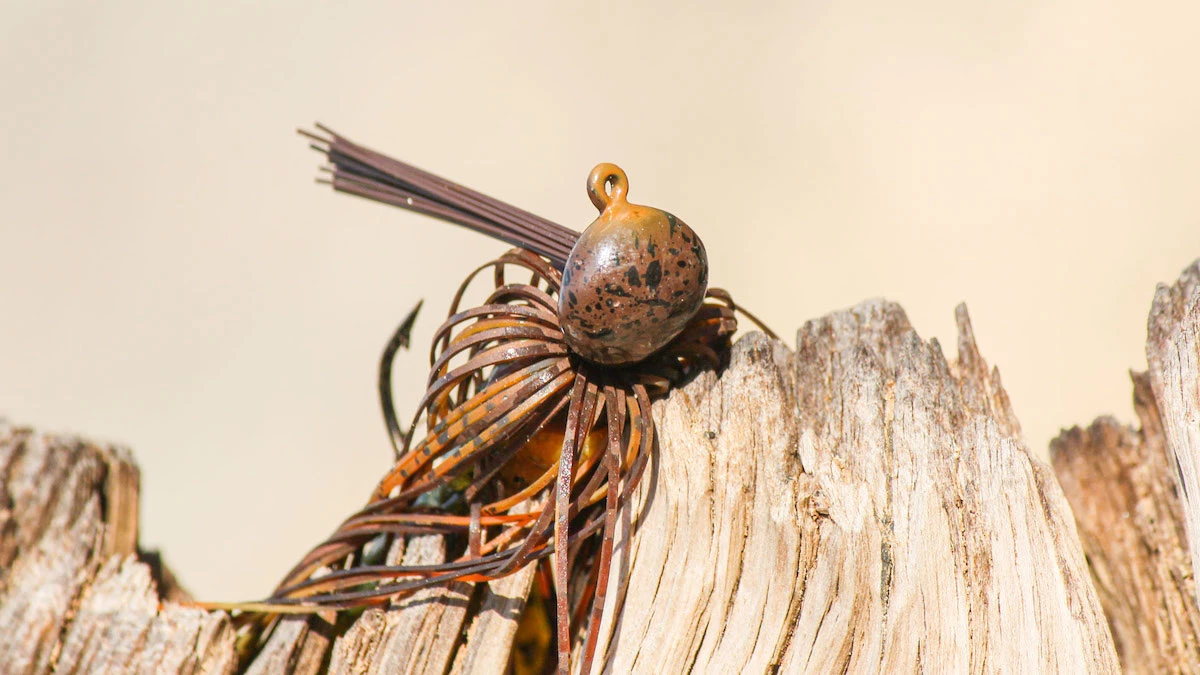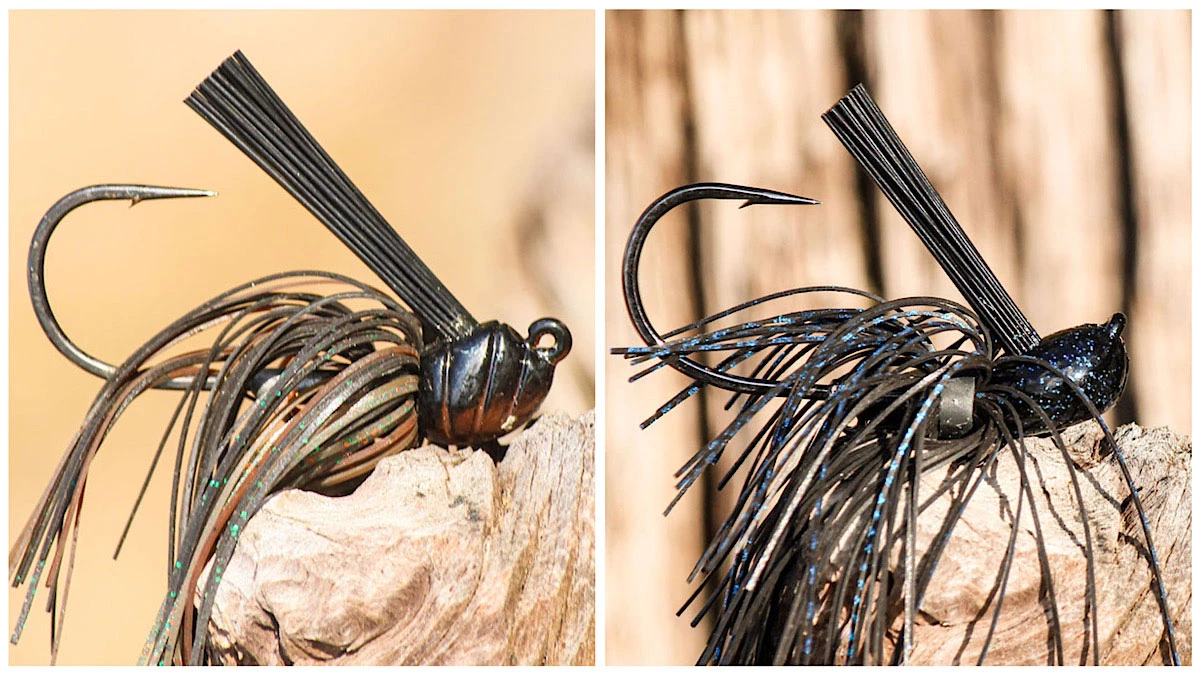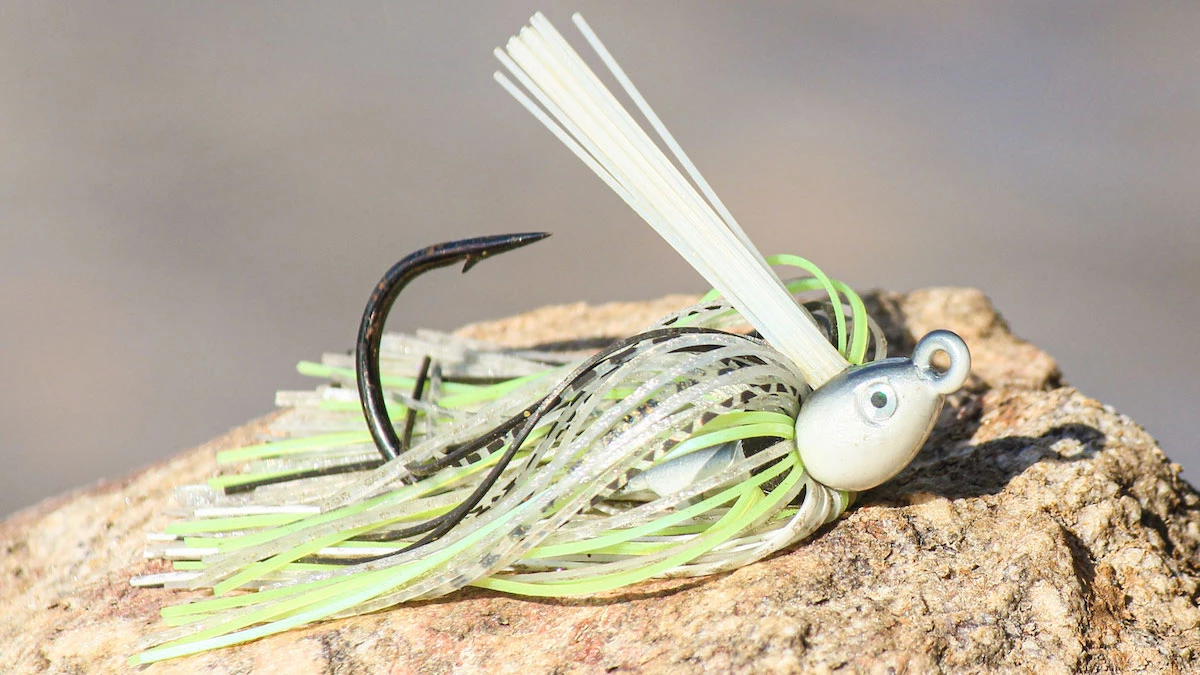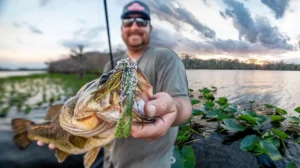There are a bunch of bass fishing jigs out there these days and choosing the right jig for the right situation can be a little intimidating. Dozens of companies mass produce jigs by the thousands, while hundreds more mom-and-pop shops add their niche offerings to the pile to pick from.
When you take into consideration a jig is one of the most versatile bass fishing baits of all time, able to be fished at all depths through all types of cover, you can see why the selection process is so complicated.
Today, we’re going to offer up a crash course on selecting the perfect jig for any situation. For these purposes, we’re going to toss out vibrating jigs and hair jigs right away, focusing only on the half-dozen or so most popular genres of skirted jigs, since these are the ones that create the most confusion.
Football jig
Football jigs are some of the more easily identifiable jigs by looks alone, since the style is in the name. The football-shaped head of the jig offers more surface area to create contact with the bottom, making this the perfect jig for fishing deep water along a hard bottom.
One of the biggest keys to fishing a jig deep effectively is maintaining bottom contact. So heavy football jigs with a wide head both get your bait down to the bottom and allow you to feel the bottom, to ensure you’re maintaining contact. The wider head also slides over rocks better, where a more pointed head would wedge in the crevices and hang up.
Finesse jig
A finesse jig, otherwise known as a ball head jig or spider jig, can be thought of as the football jig’s little brother. It’s a jig that is also intended to be dragged across a relatively clean or rocky bottom but as the name implies, it’s a little more finesse.
This is a jig you’d use in place of the football jig when the fishing is a little tougher, the water is a little colder or you’re targeting spotted or smallmouth bass. Though these two species could and certainly do eat a football jig as well, the smaller bait with the trimmed skirt offers less lure for these smaller-mouthed predators to grab hold of without getting the hook.
Skipping jig
A skipping jig is often lumped into another category, but we pulled it out for the purposes of this article so it could stand alone. Reason being, a true skipping jig is designed with one primary purpose in mind—to skip. Thus, skipping jigs often have what looks kind of like a smashed football head that scoops upward.
This design creates a wide, relatively flat surface on the underside of the jighead. If you’ve ever tried skipping a rock across the water, this design makes perfect sense as the flatter, thinner stones skip the best. These are the jigs you’ll want to use when skipping under docks, boats or brush.
Flipping jig
Flipping jigheads vary slightly more more than any other style of jig head, since you can flip all sorts of different cover. There are flipping jigs that are designed more for flipping grass and other light vegetation that have a more pointed head. But these jigs wouldn’t come through wood or rock well.
When flipping those types of cover, you’ll want to go with more of an Arkie-style head that has a bit of a flatter, more scooped head like the skipping jig. This head design brings the eye of the jig forward and up a little. In conjunction with the rounder head, this prevents the jig from wedging into cover like wood and rock the way other, pointier flipping jigs would.
Casting jig
A casting jig, also referred to often as an all-purpose jig or an Arkie jig, is a great jig to use when making long casts where you intend to drag the bait through cover, like a brush pile for instance. These jigs are typically a little lighter than football jigs and their head design is a not as wide or round as a football head, which allows the bait to come through cover better. And, as the alias “all purpose” implies, these jigs are also the best all-around jigs.
Though football jigs are better in certain situations, as are flipping jigs, skipping jigs and finesse jigs, you can somewhat adequately substitute a casting jig for all of these other baits in many situations. This is very beneficial when junk fishing or fishing multiple patterns. With a casting jig, you can have one bait on deck that you can skip under a dock, flip into a laydown and drag along the bottom or through brush.
Swim jig
A swim jig is one jig that cannot be replaced by a casting jig, however. The key characteristic of a swim jig is its pointed head. Intentionally designed this way, a swim jig is built to come through cover well, vegetation in particular. The pointed head sheds grass and debris that would otherwise bog down a less aerodynamic head design.
Swim jigs also often have beefier weedguards and stouter hooks, since these jigs are designed to go deep into cover and pull big bass out. It is worth mentioning, however, there are some more finesse swim jigs as well, built for open-water or sparse-cover applications. While these still have the pointed head, they typically have a lighter weed guard and hook.
Grass jig
Grass jigs can really be looked at like the big brother to both a swim jig as well as a flipping jig designed for grass. These jigs also have pointed heads but are often heavier and equipped with even beefier hooks and weed guards. In fact, one of the most famous niche jigs in this genre features dual weedguards.
These jigs are built to be flipped into heavy cover, such as submerged hydrilla clumps, reeds and mats. The excessive weed guards keep the hook clean on the way in and the meaty hook hauls them out. These are some of the most technique-specific and seldom-used jigs by the bass fishing community as a whole but a tool you must have given certain conditions.
Hopefully this brief overview helps you better understand some of the design characteristics that make each of these jigs ideal in different situations. When in doubt and not around grass, you can cover a lot of ground with a casting jig. But if you really dig into the details, you’ll find there’s a particular jig for just about every situation and you can create a more effective tackle box.


